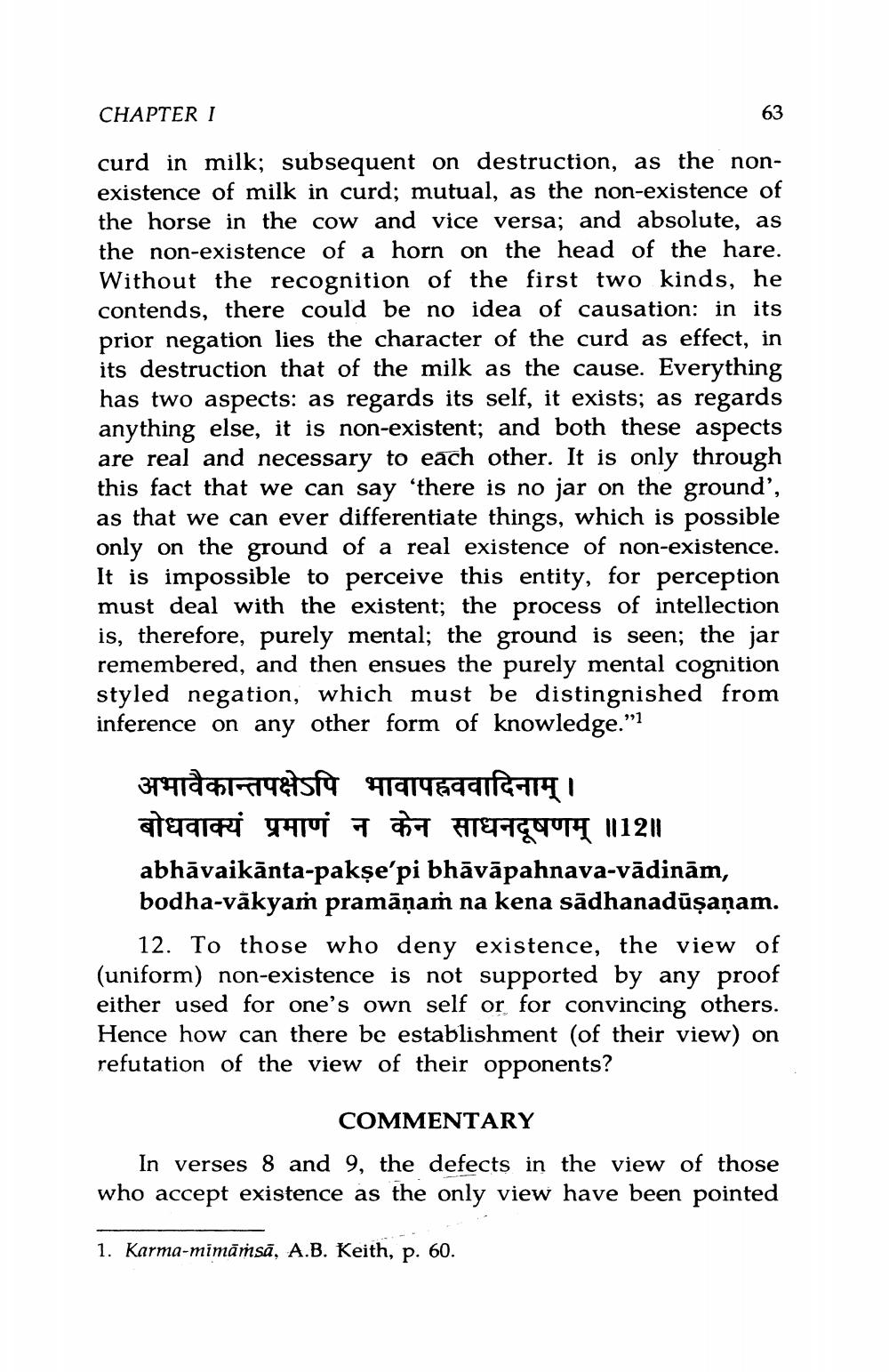________________
CHAPTER I
63
curd in milk; subsequent on destruction, as the nonexistence of milk in curd; mutual, as the non-existence of the horse in the cow and vice versa; and absolute, as the non-existence of a horn on the head of the hare. Without the recognition of the first two kinds, he contends, there could be no idea of causation: in its prior negation lies the character of the curd as effect, in its destruction that of the milk as the cause. Everything has two aspects: as regards its self, it exists; as regards anything else, it is non-existent; and both these aspects are real and necessary to each other. It is only through this fact that we can say 'there is no jar on the ground', as that we can ever differentiate things, which is possible only on the ground of a real existence of non-existence. It is impossible to perceive this entity, for perception must deal with the existent; the process of intellection is, therefore, purely mental; the ground is seen; the jar remembered, and then ensues the purely mental cognition styled negation, which must be distingnished from inference on any other form of knowledge."
अभावैकान्तपक्षेऽपि भावापह्नववादिनाम् ।
बोधवाक्यं प्रमाणं न केन साधनदूषणम् ॥12॥
abhāvaikānta-pakṣe'pi bhāvāpahnava-vādinām, bodha-vakyaṁ pramāṇaṁ na kena sādhanadūṣaṇam.
12. To those who deny existence, the view of (uniform) non-existence is not supported by any proof either used for one's own self or for convincing others. Hence how can there be establishment (of their view) on refutation of the view of their opponents?
COMMENTARY
In verses 8 and 9, the defects in the view of those who accept existence as the only view have been pointed
1. Karma-mimāmsā, A.B. Keith, p. 60.




